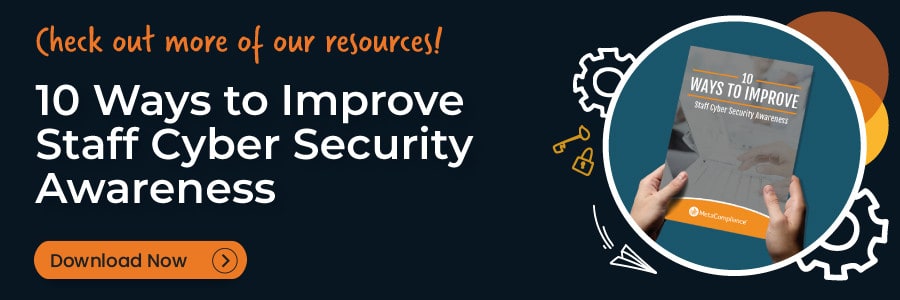Cyber security best practices have become essential as cybercrime poses a significant problem for organisations around the world. Data breaches continue to dominate the headlines, and the Coronavirus pandemic has highlighted the urgent need for improved security measures to defend against evolving threats.
The Importance of Cyber Security Best Practices for Small to Mid-Sized Organizations
Small to mid-sized organisations are increasingly under attack and are proving to be a very attractive target for cybercriminals. In fact, according to the Global State of Security report, 66% of these organisations have experienced a breach within the last 12 months.
Typically, these organisations don’t have the same big budget or resources allocated to cyber security that larger organisations have, leaving them vulnerable to attack.
As cyber threats become more targeted, organisations need to become more proactive in their approach to cyber security and invest in the areas of their business that need safeguarded the most.
To help you establish which areas need to be prioritised, we’ve put together a list of six cyber security best practices.
6 Cyber Security Best Practices
1. Regular Patching
Patch Management should be a key part of your cyber security strategy. New vulnerabilities are discovered all the time and unless patches are applied, hackers will exploit these vulnerabilities to gain access to your network.
A patch is essentially a piece of code that is installed into an existing software program to correct a problem or to improve an application’s general stability. It’s essential in keeping machines up to date, stable, and safe from malware and other threats.
Patching is estimated to prevent up to 85% of all cyber-attacks so it’s vital your organisation applies these patches as soon they become available. Failure to do so could be catastrophic for your business.
2. Two-Factor Authentication

Two-Factor authentication provides an extra layer of security that can make all the difference between an attempted hack and a business crippling data breach.
In addition to a username and password, two-factor authentication requires a second piece of information to confirm the user’s identity. This could be a pin, code, token, or even biometric data such as a fingerprint.
It’s one of the simplest ways to keep sensitive company information private and secure from interception. This could be for logging in, resetting a password, or to provide a stronger authentication process for the protection of sensitive data like personally identifiable or financial information.
With an increasing number of employees now working remotely, two-factor authentication enables them to access company data without compromising corporate networks.
3. High-Quality Security Training for Employees
90% of all successful cyber-attacks are a result of information unknowingly provided by employees. As networks become harder to breach, hackers are increasingly targeting staff as they provide the easiest way to infiltrate a network.
Effective security awareness training is essential in training employees on how to identify and respond appropriately to the growing range of cyber security threats. All employees, at every level of the organisation should receive this training to ensure they are armed with the skills required to identify an attack.
The training will not only educate staff on the range of threats they face internally, but it will also cover the cyber security risks faced when working remotely. Remote working has now become the norm, but it can pose a serious security risk that can leave your organisation’s IT network, systems, and devices highly vulnerable to attack. Cybercriminals will take advantage of any lapses in security and the current crisis is providing them with lots of attractive weak points to exploit.
4. Reliable Offsite Back-Up Solution

With attacks against businesses almost doubling in the last five years, organisations need to be able to react quickly and effectively to any security incidents that may arise.
One of the best ways to protect your organisation and ensure it is equipped to deal with the growing range of cyber security threats is to use the services of an outsourced Security Operations Centre (SOC).
A SOC is run by a dedicated team of security professionals who work to monitor an organisation’s security operations to prevent, detect and respond to any potential threats. They will typically track security threats, including potential threat notifications via tools, employees, partners, and external sources. The security team will then investigate the threats, and if it’s deemed to be a security incident, they will handle it quickly and effectively.
If you don’t have the resources for an in-house security team, an outsourced SOC will provide you with the expertise, experience, and technologies that can protect your organisation against the growing range of cyber security threats.
5. Identify Information Assets and Data Processing Activities
To develop a comprehensive cyber security strategy and effectively identify risks, your organisation will need to complete a thorough audit of its information assets and data processing activities.
This will help determine what your most valuable information assets are, where they are located, and who has access. Once these have areas have been identified you can focus on how each information asset could potentially be compromised. Whether it’s a system breach, malware, or even an insider threat, steps can be taken to improve these processes and reduce the chance of a cybercriminal gaining access to critical systems.
Regular audits of data processing activities will help safeguard data and reduce organisational risk.
6. Create an Incident Response Plan
As the number of cyber attacks and data breaches continues to rise, your organisation will inevitably experience a security incident at some point.
To effectively deal with any incident that may arise, it’s important to have a reporting structure in place that will enable staff to identify and report incidents in a timely manner. The reporting capability will address the full range of incidents that could occur and set out appropriate responses. The supporting policy, processes, and plans should be risk-based and cover any regulatory reporting requirements.
The establishment of an incident response plan will help educate and inform staff, improve organisational structures, improve customer and stakeholder confidence, and reduce any potential financial impact following a major incident.
Read more: How to Write an Effective Incident Response Plan








